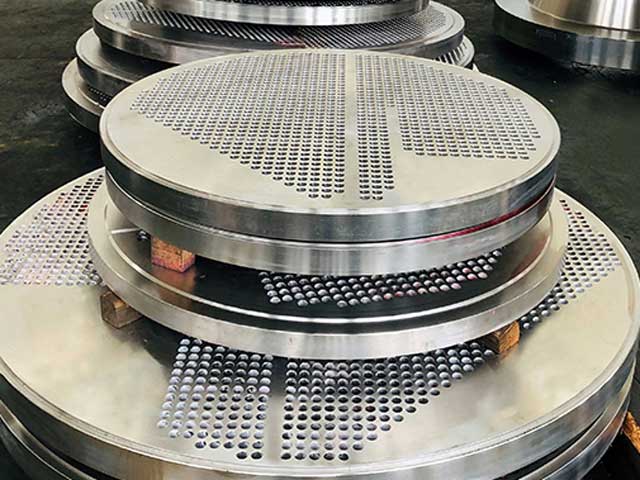About our 316 stainless steel forgings
316 stainless steel forgings belong to the austenitic stainless-steel forgings with a melting range of 1,371 °C – 1,399 °C (2,500 °F – 2,550 °F). As an austenitic stainless-steel forgings, 316 stainless steel forgings have characteristics such as high tensile strength, good corrosion resistance, and high concentrations of chromium (Mo) and nickel (Ni).
316 stainless steel forgings are the standard molybdenum-bearing grade. 316 stainless steel forgings better overall corrosion resistant properties than 304 stainless steel forgings because of 316 stainless steel forgings have molybdenum (Mo), particularly higher resistance to pitting and crevice corrosion in chloride environments.
316L stainless steel forgings are the low carbon version of 316 stainless steel forgings. 316L stainless steel forgings have been extensively used in heavy gauge welded components (over about 6mm). 316H stainless steel forgings are with higher carbon content has application at elevated temperatures.

316 stainless steel forgings chemical composition information.
316 stainless steel forgings corrosion resistance
Excellent in a range of atmospheric environments and many corrosive media – generally more resistant than 304. Subject to pitting and crevice corrosion in warm chloride environments, and to stress corrosion cracking above about 60 °C. Considered resistant to potable water with up to about 1000 mg/L chlorides at ambient temperatures, reducing to about 500 mg/L at 60 °C.
316 is usually regarded as the standard “marine grade stainless steel”, but it is not resistant to warm sea water. In many marine environments 316 does exhibit surface corrosion, usually visible as brown staining. This is particularly associated with crevices and rough surface finish.
316 stainless steel forgings heat resistance
Good oxidation resistance in intermittent service to 870 °C and in continuous service to 925 °C. Continuous use of 316 in the 425-860 °C range is not recommended if subsequent aqueous corrosion resistance is important. Grade 316L is more resistant to carbide precipitation and can be used in the above temperature range. Grade 316H has higher strength at elevated temperatures and is sometimes used for structural and pressure-containing applications at temperatures above about 500 °C.
316 stainless steel forgings heat resistance heat treatment
Solution Treatment (Annealing) – Heat to 1010-1120 °C and cool rapidly. These grades cannot be hardened by thermal treatment.
316 stainless steel forgings disadvantages
316 stainless steel forgings cost higher than 304 stainless steel forgings. 316 stainless steel forgings cost higher because they have higher nickel (Ni).
difference between 304 stainless steel forgings and 316 stainless steel forgings
The key difference between 304 and 316 stainless steel that makes them different is the addition of molybdenum, an alloy that drastically enhances corrosion resistance, especially for more saline or chloride-exposed environments. 316 stainless steel contains molybdenum, but 304 does not.
